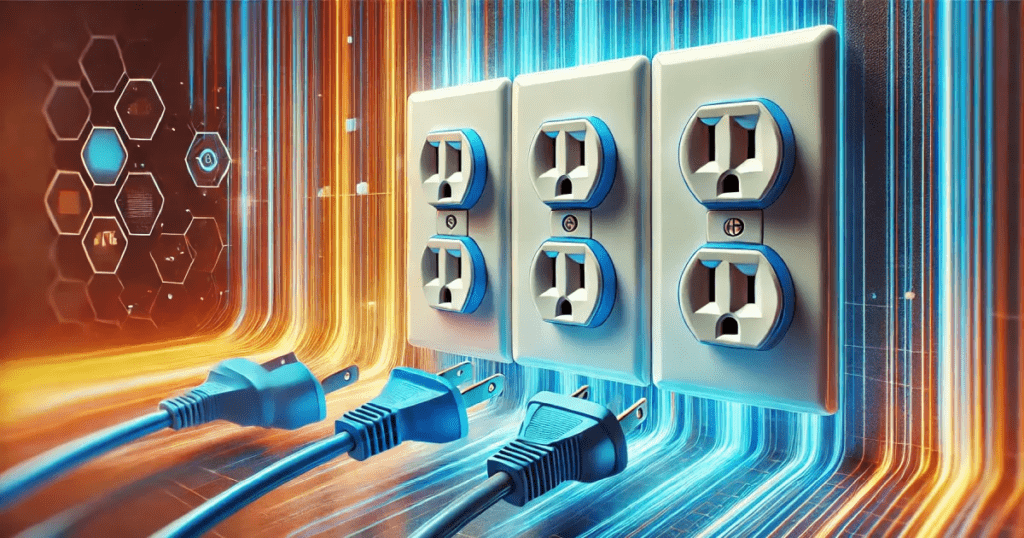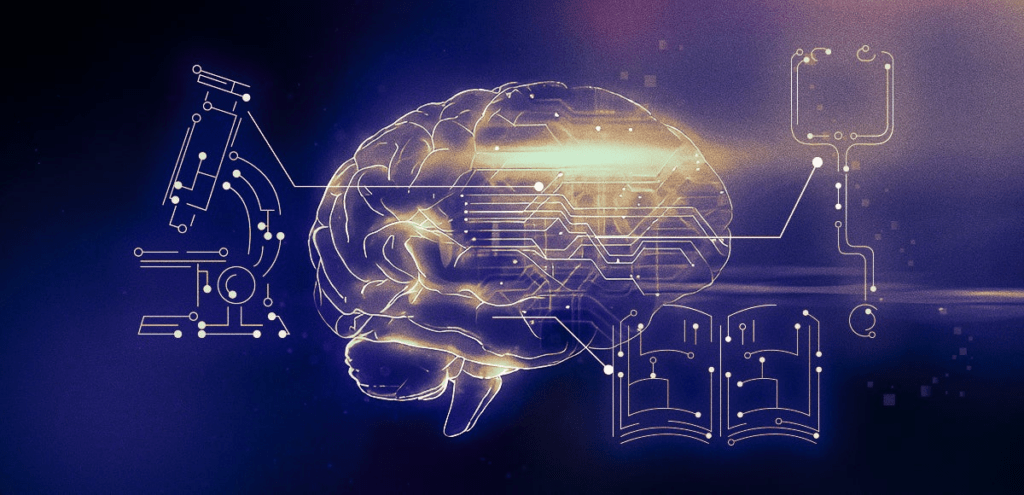The relentless march of technology brings both immense benefits and unforeseen challenges. A recent report highlights the enormous energy consumption of tech giants Google and Microsoft, each reportedly using 24 terawatt-hours (TWh) of electricity in 2023 – exceeding the combined usage of over 100 countries. This staggering figure underscores the critical need for sustainable solutions as Artificial Intelligence (AI) continues its exponential growth.

Google and Microsoft consume more electricity than 100+ countries (Image credit: Michael Thomas)
The Devouring Power of AI
At the heart of this energy crisis lies the ever-expanding realm of AI. From powering cloud services and complex algorithms to driving advancements in healthcare, education, and entertainment, AI’s insatiable appetite for processing power translates to a growing demand for electricity. Generative AI, a branch capable of creating entirely new content, further exacerbates the issue. Every innovative query, artistic creation, or medical analysis comes at the cost of vast energy expenditure.

The Cooling Challenge
Beyond electricity, AI systems generate immense heat, requiring equally substantial water consumption for cooling. Reports suggest that a single AI query can utilize an alarming amount of water, equivalent to the volume of a water bottle. This raises concerns about the long-term sustainability of AI development, particularly in water-scarce regions.
A Glimmer of Green: The Drive for Renewable Energy
While the environmental impact of AI is undeniable, it’s important to acknowledge the efforts of industry leaders like Google and Microsoft. Both companies are at the forefront of advocating for renewable energy sources, aiming to power their operations with cleaner, sustainable solutions. They are actively investing in solar, wind, and geothermal energy sources, striving to decouple their growth from fossil fuels.

The Economic Powerhouse: AI and Financial Prosperity
The potential of AI transcends environmental concerns, offering a glimpse into a future brimming with economic prosperity. Microsoft’s recent ascent to the top of the valuation charts, exceeding $3 trillion, can be partly attributed to its significant investments in AI. CEO Satya Nadella himself acknowledges the “new era of AI transformation” as a key driver of the company’s financial success.

Powering the Future: Exploring Alternative Solutions
As AI continues to evolve, the demand for sustainable energy solutions becomes ever more pressing. Tech visionaries like Elon Musk have warned of potential power shortages by 2025 due to AI’s exponential growth. This necessitates exploring alternative energy sources beyond traditional renewables.
The Fusion Gamble: A Promising, Yet Uncertain Future
Sam Altman, a prominent figure in AI research, has expressed interest in nuclear fusion as a potential solution. Microsoft, partnering with Helion, aims to achieve commercially viable nuclear fusion by 2028 to power its AI operations. While nuclear fusion promises a clean and potentially limitless energy source, scientists caution against overreliance. Fusion technology remains in its early stages, and its viability as a solution to the immediate climate crisis is uncertain compared to established technologies like fission and renewable sources.
A Delicate Balance: Innovation and Sustainability
The journey toward a future powered by AI requires a delicate balancing act. While we embrace technological advancements that improve our lives, we must remain cognizant of the environmental costs. Investing in renewable energy sources, exploring alternative power options like fusion, and prioritizing water efficiency are crucial steps in ensuring a sustainable future for AI. The combined efforts of tech giants, policymakers, and the scientific community are needed to navigate this complex terrain. With a focus on both innovation and environmental responsibility, we can harness the power of AI to build a better future for all.
Ecology Insights
- The Digital Carbon Footprint: Beyond the immediate energy consumption of data centers, the entire lifecycle of AI development contributes to the digital carbon footprint. This includes the manufacturing of hardware, software development, and the disposal of electronic waste. Embracing sustainable practices throughout the AI development chain is essential for mitigating the environmental impact.
- The Heat Island Effect: Data centers generate a significant amount of heat, contributing to the urban heat island effect. This phenomenon occurs when densely populated areas experience higher temperatures than surrounding rural areas. The concentrated heat from data centers exacerbates this effect, impacting local ecosystems and human health. Strategies such as green roofs, energy-efficient cooling systems, and strategically locating data centers outside urban areas can help mitigate this issue.
- E-waste and Resource Depletion: The rapid development cycle of AI hardware leads to a growing problem of electronic waste (e-waste). Proper disposal and recycling of e-waste is crucial to prevent environmental contamination and resource depletion. Investing in research to develop longer-lasting, more energy-efficient hardware and creating robust e-waste recycling infrastructure are key steps towards a more sustainable future.
- AI for Environmental Solutions: While AI’s energy consumption poses a challenge, it also presents a unique opportunity for environmental solutions. AI can be harnessed to develop innovative tools and strategies for tackling climate change and ecological issues. Here are some potential areas of exploration:
- Renewable Energy Optimization: AI can be used to optimize the placement and operation of renewable energy sources like solar and wind farms. By analyzing weather patterns, energy demands, and grid conditions, AI can maximize efficiency and output from renewable sources.
- Smart Grid Management: Integrating AI into smart grid technologies can lead to more efficient energy distribution and utilization. AI can analyze real-time energy consumption patterns, predict demand fluctuations, and optimize energy flow throughout the grid, reducing overall energy waste.
- Precision Agriculture: AI-powered precision agriculture techniques can optimize resource usage in farming practices. By analyzing soil conditions, weather data, and crop health, AI can guide farmers in applying water, fertilizers, and pesticides only where and when needed, minimizing environmental impact and maximizing crop yield.
- Conservation Efforts: AI can be a valuable tool in conservation efforts. By analyzing satellite imagery, drone footage, and wildlife sensor data, AI can track animal populations, monitor deforestation, and predict poaching activities. This information empowers conservationists to take targeted action and protect endangered species and ecosystems.
- Climate Change Modeling: AI can be used to create more sophisticated climate models that predict weather patterns, sea level rise, and the effects of climate change with greater accuracy. This information is crucial for policymakers and scientists to develop effective mitigation and adaptation strategies.
The Road Ahead: A Collaborative Effort
The challenge of balancing AI’s growth with environmental responsibility requires a collaborative effort from various stakeholders. Here are some key steps to consider:
- Government Regulation and Incentives: Governments can play a crucial role in promoting sustainable AI development by implementing regulations and incentives that encourage companies to invest in renewable energy sources, develop energy-efficient hardware, and prioritize responsible e-waste management practices.
- Industry Collaboration: Collaboration among tech giants, research institutions, and renewable energy companies is essential for accelerating advancements in clean energy technologies and fostering more sustainable data center practices.
- Consumer Awareness: Consumer choices can also influence the direction of AI development. By supporting companies committed to sustainability and advocating for eco-friendly practices, consumers can send a powerful message and encourage responsible innovation.
A Sustainable Future for AI
The undeniable power of AI holds immense potential to transform our world. However, this potential comes at an environmental cost that cannot be ignored. By working together, embracing clean energy solutions, and harnessing AI for environmental solutions, we can ensure a future where AI thrives in harmony with the planet. The path forward is paved with innovation, collaboration, and a commitment to responsible development. By prioritizing sustainability, we can unlock the true potential of AI and build a future that benefits all.
Related Content
- Google’s Gemini Announcement Under Scrutiny: AI Demo Raises Concerns Over Transparency and Real-Time Capabilities
- Google introduces Gemini, its astonishing AI that outshines ChatGPT
- Google Pixel 8 and Pixel 8 Pro: Unveiling the Future of Smartphones with a Green Touch
- AI-Powered Android Apps: Transforming User Experiences in 2024
- The Latest Breakthroughs in AI: What You Need to Know in 2024
- AI-Powered IT: Unleashing New Horizons in Technology Advancements
- Tech Giants Actively Tackle AI’s Rising Carbon Footprint
- New data and AI solutions in Microsoft Cloud for Sustainability help move organizations from pledges to progress
- Google AI: Powering Progress or Costing the Earth?
- Sustainable by design: Advancing the sustainability of AI
- AI’s Two Faces: Powering Progress, Straining Resources
- The Hidden Environmental Cost of AI: Google’s Greenhouse Gas Emissions Surge Despite Carbon Neutral Pledge
- Accelerating AI with Sustainability – A Playbook